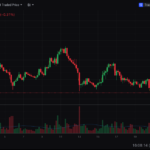Swing trading is one of the most exciting and dynamic trading strategies, offering a middle ground between fast-paced day trading and long-term investing. By capitalizing on market “swings,” traders aim to catch trends and ride them for several days or even weeks. If you’re looking for a strategy that balances time commitment with potential profit, swing trading might be your ticket.
What is Swing Trading?
At its core, swing trading involves identifying short- to medium-term price movements in stocks, crypto, forex, or other markets. The goal is simple: buy low during an uptrend and sell high, or sell high during a downtrend and buy back lower. Swing traders rely heavily on technical analysis, focusing on price patterns, moving averages, and trendlines, but also keep an eye on fundamental catalysts like earnings reports or macroeconomic news.
Why Choose Swing Trading?
- Flexibility: Unlike day trading, you don’t need to monitor the markets all day. Swing trading allows you to analyze markets after hours and place trades with predefined entry and exit points.
- Potential for High Returns: Swing trading capitalizes on larger price moves than intraday fluctuations, offering the potential for significant gains without the need for constant oversight.
- Reduced Emotional Pressure: Holding positions for a few days gives you time to think strategically, avoiding the split-second decisions required in day trading.
Key Tools for Swing Traders
- Technical Indicators:
- Moving Averages (MA): Help identify trend direction and support/resistance levels.
- Relative Strength Index (RSI): Indicates whether an asset is overbought or oversold.
- MACD (Moving Average Convergence Divergence): Tracks momentum and trend strength.
- Chart Patterns:
- Bullish or bearish flags.
- Double tops and bottoms.
- Head and shoulders.
- Fundamental Analysis:
- Earnings announcements, product launches, or changes in economic policy can spark significant swings.
- Risk Management Tools:
- Stop-loss orders to limit potential losses.
- Position sizing to ensure trades align with your risk tolerance.
Swing Trading in Action
Example 1: Trading a Bullish Swing
Imagine a stock is trading at $50 and consolidating near its moving average. A positive earnings report triggers a breakout, and the price jumps to $55. A swing trader might enter at $52 after confirming the trend, set a target of $58, and place a stop-loss at $50 to protect against downside risk.
Example 2: Shorting a Bearish Swing
Now consider a stock that’s overbought, trading at $120. The RSI indicates the asset is due for a correction. A swing trader might short the stock at $118, set a profit target at $110, and place a stop-loss at $122.
Tips for Swing Trading Success
- Follow the Trend: “The trend is your friend” applies to swing trading. Trade with the prevailing market direction to increase your odds of success.
- Patience Pays Off: Avoid chasing trades. Wait for confirmation of breakouts, reversals, or trend continuations before entering.
- Keep Your Emotions in Check: The market can be unpredictable. Stick to your trading plan and avoid making impulsive decisions.
- Focus on High-Volume Assets: Liquid markets reduce the risk of slippage and ensure you can enter and exit positions with ease.
The Pros and Cons of Swing Trading
Pros:
- Requires less time commitment than day trading.
- Offers higher potential returns than long-term investing.
- Works well across multiple markets (stocks, crypto, forex, etc.).
Cons:
- Holding positions overnight exposes you to gap risk.
- Success relies heavily on accurate technical analysis.
- May miss larger moves that occur over months or years.
Is Swing Trading Right for You?
Swing trading is perfect for individuals who want to stay engaged with the markets without being glued to their screens. It requires a balance of technical knowledge, patience, and discipline. If you’re willing to put in the work to master charts and understand market dynamics, swing trading could be a lucrative addition to your trading arsenal.
Final Thoughts
Swing trading blends the best of both worlds—providing flexibility and the potential for meaningful profits. Whether you’re trading stocks, crypto, or forex, mastering the art of identifying and capitalizing on market swings can help you build a robust trading strategy. Remember, success comes with practice, proper risk management, and a clear plan for every trade.
Disclaimer
This article is for informational purposes only and does not constitute financial advice. Swing trading involves risks, and past performance does not guarantee future results. Always conduct your own research before making investment decisions.







